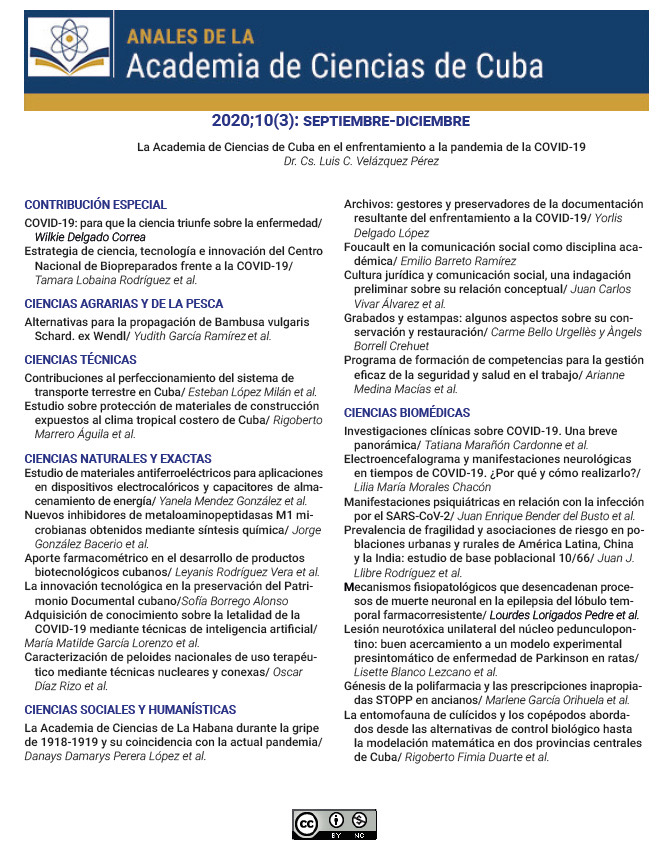Knowledge acquisition about the lethality of COVID-19 by using artificial intelligence
Keywords:
COVID-19, artificial intelligence, machine learning, feature selection, rule inductionAbstract
Introduction. The spread of COVID-19 in the world has brought about much research to face it and alleviate its effects. The artificial intelligence community has actively participated in several dimensions of this effort.Objective. This paper shows how to apply Artificial Intelligence techniques, particularly Data Science and Machine Learning, in order to gain valuable knowledge to predict COVID-19 lethality.
Methods. We analyzed the available data concerning Mexican patients until April 20, including 16 features (physical and clinical) of about 9000 positive cases (more than 700 deaths), focusing on identifying patterns to predict a fatal course of the disease. Several techniques were used for data preparation and visualization, feature selection and rule induction by using J48 algorithm, neural networks, and Rough Sets.
Results. Patterns discovered through different ways coincide with the strong relationship among several features with respect to the lethality of COVID-19, in particular, age, obesity, hypertension, immunosuppression, diabetes, and renal and cardiac problems. Results permit a better understanding of the disease and they show the potential value of using Artificial Intelligence to do a multi-perspective analysis of clinical data to support medical work.
Downloads
Published
How to Cite
Issue
Section
License
The journal Anales de la Academia de Ciencias de Cuba protects copyright, and operates with a Creative Commons License 4.0 (Creative Commons Attribution-NonCommercial License 4.0). By publishing in it, authors allow themselves to copy, reproduce, distribute, publicly communicate their work and generate derivative works, as long as the original author is cited and acknowledged. They do not allow, however, the use of the original work for commercial or lucrative purposes.
The authors authorize the publication of their writings, retaining the authorship rights, and assigning and transferring to the magazine all the rights protected by the intellectual property laws that govern in Cuba, which imply editing to disseminate the work.
Authors may establish additional agreements for the non-exclusive distribution of the version of the work published in the journal (for example, placing it in an institutional repository or publishing it in a book), with recognition of having been first published in this journal.
To learn more, see https://creativecommons.org






